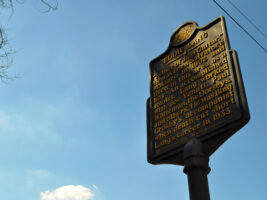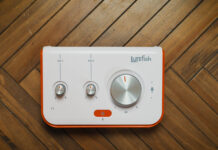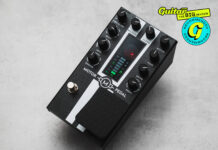
Eddie Lang: the forgotten godfather of the guitar solo
Eddie Lang’s name almost never comes up in conversations about guitar heroes. Perhaps it’s because in the time that he operated, the idea of a guitar hero was pretty much nonexistent.
READ MORE: The little-known story of the first time Bob Dylan ‘went electric’ – and it wasn’t in 1965
But 90 years after his death, the impact this Italian-American musician had on guitar is pretty much unparalleled – forging almost single-handedly the role that guitar would take as music evolved through the 20th century and beyond.
In some ways the lack of kudos given to Lang is understandable. He died tragically young (in that too he became something of a grim trailblazer for guitar heroes), and perhaps because of this the players who he influenced have ended up overshadowing him.
But the innovations he made to how the guitar is played, and its role in a band context, transformed it from a rhythmic, background instrument to a melodic force at the forefront of songs – a role that would eventually shape popular music like no other instrument in the decades to come.
Lang was technically brilliant, harmonically sophisticated, and an innovative collaborator that was a godfather of modern guitar. This is his short lived but inspirational story about how he reimagined what the guitar could do, and quite possibly invented the guitar solo.
Origins
The man who would later be known as ‘Eddie Lang’ was born Salvatore Massaro in Philadelphia in 1902, the song of an Italian-American instrument maker. He picked up violin at seven, then banjo. Eventually shifted to the guitar, with his first six-string fittingly crafted by his father using the lutherie skills he’d been taught in the old world.
At the time banjo, horns, and piano were popular lead instruments in jazz bands. Guitar was part of the rhythm section and rarely took focus. But Lang would pioneer the idea that the guitar could become a lead, melodic instrument – not something to be buried.
Lang’s classical music training and understanding of multiple string instruments gave him the perfect starting point to try something radical. In doing so he would also innovate a whole new way of playing the instrument.
The First Lead Guitarist
During the Roaring 20s and early 1930s Lang single handedly laid down the blueprint for guitar solos as we know them today. His playing dexterity and wealth of harmonic knowledge allowed him to introduce single-note solos and complex chord voicings – sometimes alternating between the two in a radically unconventional fashion – that created a precedent for guitarists that came after him.
Lang’s impressive technique combined the percussive attack of jazz with classical fingerpicking that created a dynamic, fluid style. He was able to move seamlessly between rhythm and lead and presented the guitar as a versatile instrument with expression. These innovations helped form a lasting foundation for jazz guitar and introduced the instrument into mainstream music.
Collaboration and Inspiration
Lang’s influence and impact evolved by collaborating with some of the most popular artists of the 1920s and 1930s. He frequently played with childhood friend and violinist Joe Venuti, and together they formed one of the first great jazz guitar-violin duos.
They had a way of playing off of each other that was electrifying, with rapid exchanges and intricate counterpoints that would eventually influence gypsy jazz and the inception of swing music.
But perhaps his most significant collaboration was with Bing Crosby. He played on many of Crosby’s early recordings, proving the guitar could function as a rhythmic and harmonic foundation.
Charlie Christian, influenced by Eddie Lang before becoming a prolific name himself, performing in New York circa 1939. Image: Donaldson Collection via Getty Images
He might have even recorded the first ever guitar solo on Crosby’s The Man I Love in 1923. Lang’s followup solo was on the Mound City Blue Blowers’ 1924 track Deep 2nd Street Blues. By this time he was an in demand freelance and session player.
He inspired legends he didn’t work with, but would go on to forge legacies of their own – a who’s who of early guitar greats including Django Reinhardt, Charlie Christian, Les Paul… and eventually some young lad from Liverpool called George Harrison.
Outside of jazz, he also worked with early blues players like Lonnie Johnson. Some of their earliest recordings showcased enlightened, dueling and call and response arrangements between two guitarists that have inspired rock and blues musicians for nearly a century.
Life and Legacy
Even though he contributed so much to the guitar and music in general, Lang is still a relatively obscure figure outside of the jazz world. There are a few reasons why his story got lost to history.
As mentioned above, he passed away young in 1933. Lang dealt with chronic laryngitis over his short life and, purportedly at the urging of Crosby, decided to have a tonsillectomy at the Park West Hospital in Manhattan.
Even in the 30s, such a procedure was relatively routine, but sadly, and for reasons that have never been explained, Lang never woke up – he was just 30 years old. This early demise meant that many of the artists he worked with and influenced would take his torch and run with it to greater heights than he’d have ever imagined, but it doubtlessly overshadowed his contribution.
It’s also worth remembering that this was the pre-electric guitar era. He played acoustic guitars. With the ongoing rise of electric guitarists in the late 1930s, his influence on music was further overshadowed by a newer, louder sound that was destined to become the next big thing in popular music.
Furthermore, Lang’s role in the groups he played in was more of an accompanist than a billable name for the most part. Much of his work was in support roles, and he was less “visible” to casual music fans. His dedicated jazz background probably also doesn’t help, even though jazz was very popular in the 1920s, it was quickly supplanted in the popular consciousness in the years and decades to come.
The Godfather Of The Solo
Eddie Lang transformed the guitar into an instrument that could lead bands. In doing so he created a new voice. Not just for his music, but for generations of guitarists that came after him. You can contend he’s not just one of the forefathers of jazz guitar, but guitar-based music altogether.
He might not be a household name, but his story is a call to remember one of the earliest trailblazers of the guitar. Technical acumen, a sense of harmony, and collaborative spirit make him one of the most important – and underappreciated – figures in the history of the instrument. And it reverberates in all guitar-based music.
Despite history largely overlooking him, what is certain is the indelible mark he left. It’s time Eddie Lang gets the recognition he deserves among the greats who helped shape modern music, and guitar playing as we know it today. Without him, all the timeless guitar solos we know and love might never have happened.
The post Eddie Lang: the forgotten godfather of the guitar solo appeared first on Guitar.com | All Things Guitar.
Source: www.guitar-bass.net











